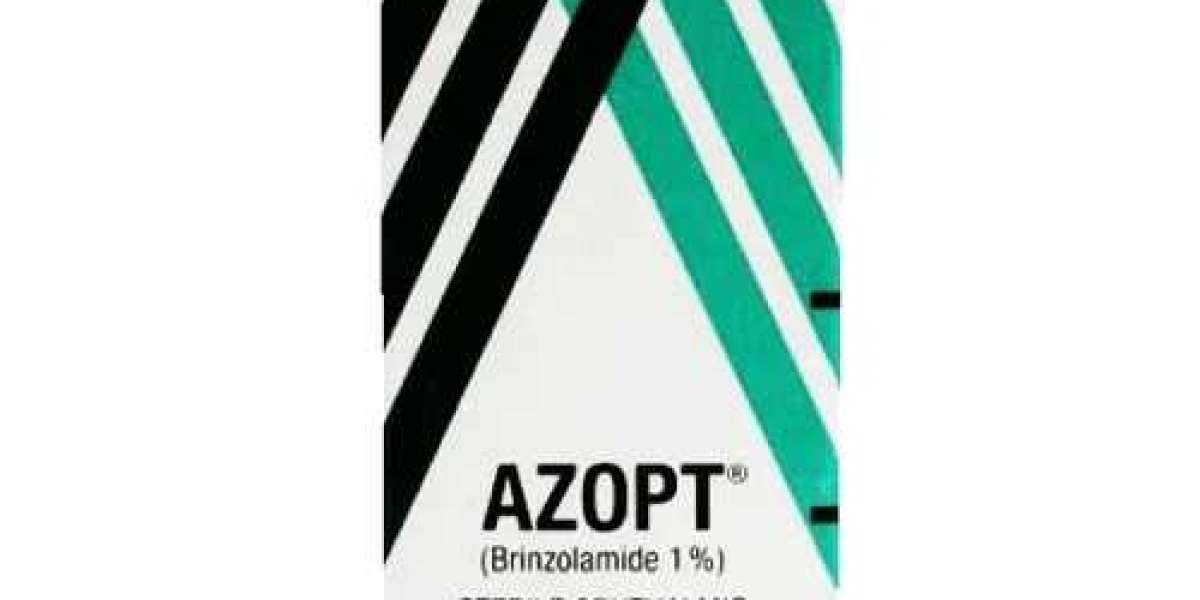Glaucoma, a condition characterized by increased pressure within the eye, is a serious eye disease that can lead to vision loss if left untreated. For individuals diagnosed with glaucoma, managing intraocular pressure (IOP) is crucial to prevent further damage to the optic nerve. Azopt eye drops have emerged as an effective treatment option for glaucoma patients, offering a comprehensive solution to control IOP and preserve vision.
Understanding Glaucoma
Definition and Causes
Glaucoma encompasses a group of eye conditions that damage the optic nerve, usually due to elevated intraocular pressure. This pressure buildup occurs when the fluid (aqueous humor) that normally flows in and out of the eye drains too slowly. The exact cause of glaucoma remains unclear, but several factors such as age, genetics, and underlying medical conditions can increase the risk.
Symptoms and Diagnosis
In the early stages, glaucoma may not present any noticeable symptoms, making regular eye examinations crucial for early detection. As the condition progresses, individuals may experience symptoms such as blurred vision, halos around lights, severe eye pain, and nausea. Diagnosis typically involves a comprehensive eye examination, including measurement of intraocular pressure, examination of the optic nerve, and visual field testing.
Role of Azopt Eye Drops
Azopt eye drops belong to a class of medications known as carbonic anhydrase inhibitors, which work by decreasing the production of aqueous humor in the eye, thereby lowering intraocular pressure. Unlike some other glaucoma medications, Azopt offers the convenience of twice-daily dosing, making it easier for patients to adhere to their treatment regimen.
How Azopt Works
Azopt contains brinzolamide, which inhibits the enzyme carbonic anhydrase, responsible for producing aqueous humor. By reducing the production of this fluid, Azopt helps to lower intraocular pressure and prevent further damage to the optic nerve.
Benefits and Effectiveness
Clinical studies have demonstrated the efficacy of Azopt in lowering intraocular pressure in patients with glaucoma. Its rapid onset of action and sustained reduction in IOP make it a valuable addition to the treatment armamentarium for glaucoma management.
Usage and Dosage
Proper Administration
Azopt eye drops should be administered exactly as prescribed by a healthcare professional. Patients are advised to wash their hands before using the drops and avoid touching the tip of the dropper to prevent contamination. Tilt the head back, pull down the lower eyelid, and instill the prescribed number of drops into the affected eye(s), being careful not to blink or squeeze the eyes.
Dosage Instructions
The typical dosage of Azopt is one drop in the affected eye(s) twice daily. It is important to follow the prescribed dosing schedule consistently to achieve optimal results. If using other eye medications, wait at least 10 minutes before instilling Azopt to avoid dilution of the medication.
Side Effects and Precautions
Common Side Effects
Like any medication, Azopt may cause side effects in some individuals. Common side effects include eye irritation, stinging or burning sensation, blurred vision, and bitter taste. These side effects are usually mild and transient, but patients should contact their healthcare provider if they persist or worsen over time.
Precautions to Take
Patients should inform their healthcare provider of any existing medical conditions or allergies before using Azopt. Individuals with a history of sulfonamide allergy should exercise caution when using Azopt, as it contains a sulfonamide moiety. Pregnant or breastfeeding women should consult their healthcare provider before using Azopt.
Alternatives to Azopt
While Azopt is an effective treatment option for glaucoma, there are alternative medications and surgical procedures available for patients who may not tolerate or respond to Azopt. These alternatives may include other classes of glaucoma medications such as beta-blockers, prostaglandin analogs, or surgical interventions like trabeculectomy or laser therapy.
Patient Experience and Reviews
Real-life experiences and testimonials from glaucoma patients can provide valuable insights into the efficacy and tolerability of Azopt. Many patients report significant improvements in their intraocular pressure and overall eye health with Azopt, often highlighting its convenience and minimal side effects compared to other medications.
Frequently Asked Questions (FAQs)
FAQ 1: How long does it take for Azopt to work?
Azopt typically starts lowering intraocular pressure within hours of administration, with maximum effects seen within 2 to 3 weeks of consistent use.
FAQ 2: Can Azopt be used with other eye drops?
Yes, Azopt can be used concomitantly with other eye drops for glaucoma management. However, patients should wait at least 10 minutes between administering different eye medications to prevent dilution.
FAQ 3: What should I do if I miss a dose of Azopt?
If a dose of Azopt is missed, patients should instill it as soon as they remember. However, if it is almost time for the next scheduled dose, they should skip the missed dose and continue with their regular dosing schedule.
FAQ 4: Are there any dietary restrictions while using Azopt?
There are no specific dietary restrictions associated with the use of Azopt. However, patients should maintain a healthy lifestyle and follow any dietary recommendations provided by their healthcare provider.
FAQ 5: Can Azopt cause allergic reactions?
While rare, some individuals may experience allergic reactions to Azopt, especially if they have a history of sulfonamide allergy. Symptoms of an allergic reaction














